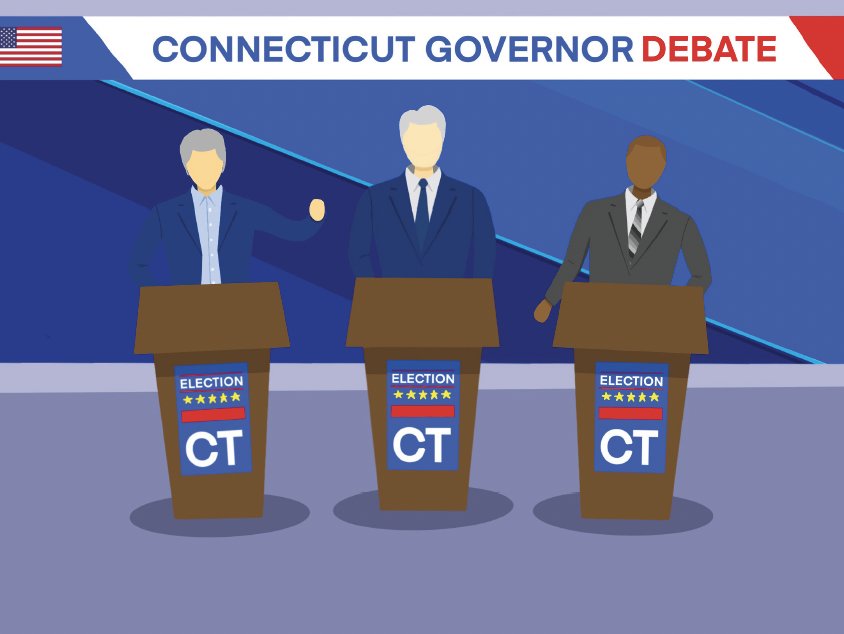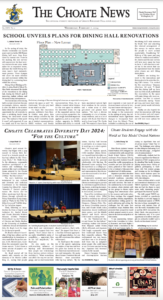
The upcoming 2022 Connecticut gubernatorial election will take place on November 8, 2022, with incumbent Democratic Governor Ned Lamont running for re-election against Republican challenger Bob Stefanowski and Independent challenger Rob Hotaling.
The first clash between the candidates occurred on September 26, as the three men gathered for a debate streamed by National Broadcasting Company (NBC) Connecticut; the debate was moderated by NBC Connecticut’s Mike Hydeck and Telemundo Nueva Inglaterra’s Grace Gomez. Issues discussed by the candidates included abortion rights, the state budget, and policing.
“I’m going to protect a woman’s right to choose. The law is not going to change as long as I am governor. Period. End of story,” declared Stefanowski, reiterating Roe v. Wade’s codification in Connecticut law.
“Actions speak louder than words, Bob,” challenged Lamont, pointing out Stefanowski’s support and donations to Republican Senate candidate Leora Levy, who favors restricting abortion access. In response, Stefanowski highlighted that Lamont had donated to former Montana Governor Steve Bullock, a supporter of the Second Amendment, and asserted the distinction between donating money and agreeing with all of a candidate’s positions.
Regarding the Connecticut government’s budget, Stefanowski attacked Lamont, saying, “It’s unconscionable that we’re sitting on $6 billion when people are out there right now only filling half of their oil tank.” Earlier this month, Stefanowski had unveiled a $2 billion tax relief plan, including recurring tax cuts worth roughly $700 million per year, that would require either deep service cuts or scaling back of the savings program to ensure budget stability and reduce Connecticut’s $40 billion long-term pension debt.
Lamont, on the other hand, reminded voters of how quickly Connecticut had rebounded from a string of budget crises and tax increases to three years of surpluses, allowing for $660 million of tax relief in 2022, full budget reserves, and unprecedented payments on the state’s unfunded pension liability. Lamont defended his position by stating, “This is the exact wrong time to be playing games with how we’re saving our money — to make sure when there’s a recession, we do not have to raise taxes, we do not have to cut education spending.”
Hotaling was divided, agreeing to an extent on paying down pension debts but adding that the budget surplus should be mainly invested in technology and infrastructure.
Regarding concerns about crime, Lamont defended his previous term, arguing that he had been expanding State Police training classes and provided statistics of declining crime rates during the pandemic. “Crime … it’s my number one responsibility.”
Stefanowski struck back, noting the vote of no confidence Lamont had received from State Police during the General Assembly’s transparency and accountability legislation in September 2020. He also argued that the crime statistics do not accurately reflect crime in Connecticut, a state that routinely ranks among the safest in America based on the FBI’s annual Uniform Crime Reports.
Statistics have shown that crime was down 3% in 2021, but the decrease was limited to only certain locations while remaining stagnant in cities such as Hartford, Bridgeport, and New Haven. Stefanowski claimed this to be false, suggesting instead that fears of personal liability discourage police from engaging in high-speed chases, leading to reduced crime rates. “We’re going to support police forces. We’re going to bring back qualified immunity, we’re gonna pay officers more, and we’re gonna keep people safe on the streets and in their homes,” he said.
Hotaling, on the other hand, dissociated from the argumentative tones of his competitors and focused on solutions such as “more community trust building … invest in technology to make their lives safer … if the job is harder in the urban environment … maybe more pay.”
Another topic on which all governors had different solutions was the installation of tolls on Connecticut state roads to help pay for infrastructure and transportation improvements. “We’re already the second-highest taxed [state] in the nation. If Lamont gets re-elected, we’ll be number one for sure,” claimed Stefanowski. He argued that a toll is still a tax and proposed an alternate solution of incorporating private sectors.
On the other hand, Lamont pushed for the installation of tolls during his first term and reminded Stefanowski that the Connecticut government had a massive deficit at the start of his term in 2019. He stated that Stefanowski’s attempts to eliminate all the transportation revenues, such as free bus service, would jeopardize the economic stability in Connecticut he had achieved. Hotaling, based on a 2019 fiscal stability report, was in favor of some tolls such as entry-exit toll points. He claimed that it was unfair “New York and Massachusetts just drive through Connecticut, and it’s 40% of our traffic on a free ride,” and yet Connecticut drivers are still taxed at entry-exit toll points.
Over the course of an hour, the candidates also debated their positions on education, housing prices, shortage of jobs and employees, transgender athletes, and medical coverage costs, among other topics. Across these subjects, sparring between Lamont and Stefanowski persisted, while Hotaling offered alternatives to the two candidates. Dominating 55% of votes in recent polls, Lamont streaks ahead of Stefanowski’s 40%. Hotaling straggles behind the two. Many critics have stated that Hotaling did not take full advantage of his only debate invitation, considering he is a minor-party candidate with no elective experience or financial backing. The next gubernatorial debate will be on Thursday, October 27, at Fairfield University’s Regina A. Quick Center for the Arts.




